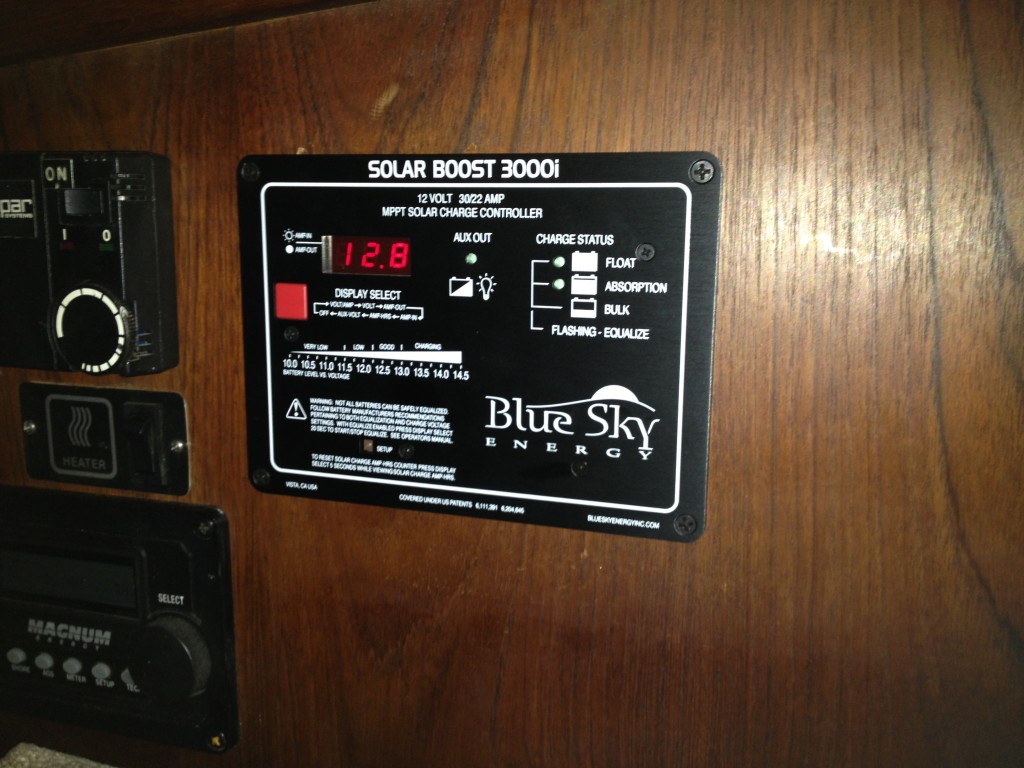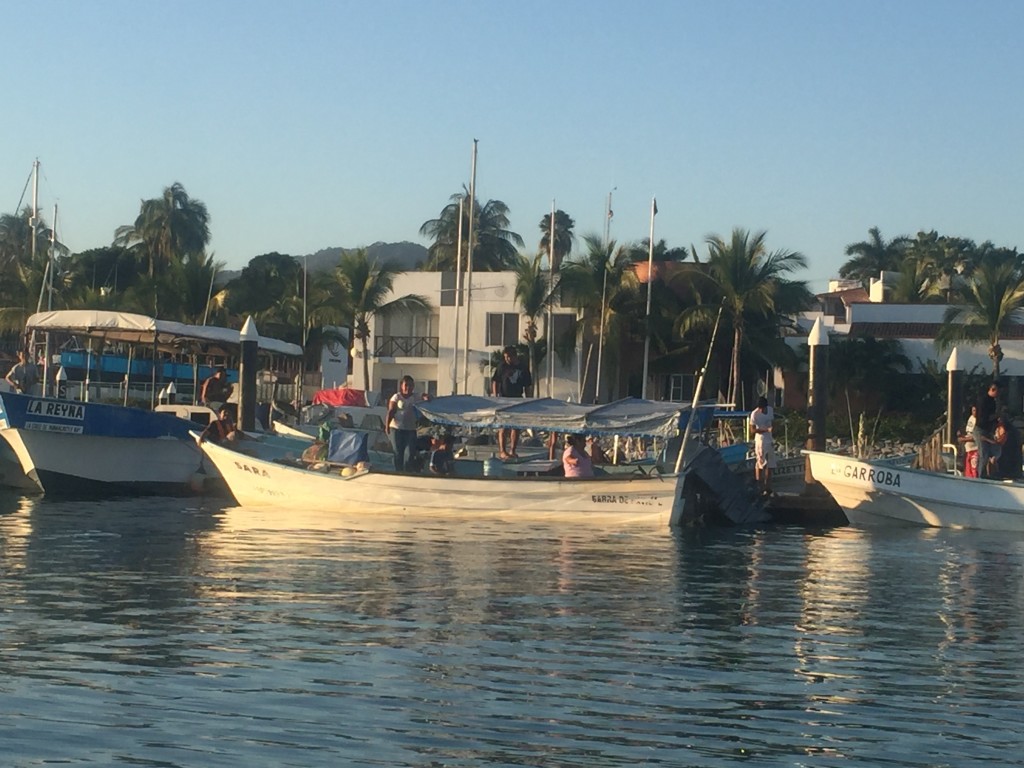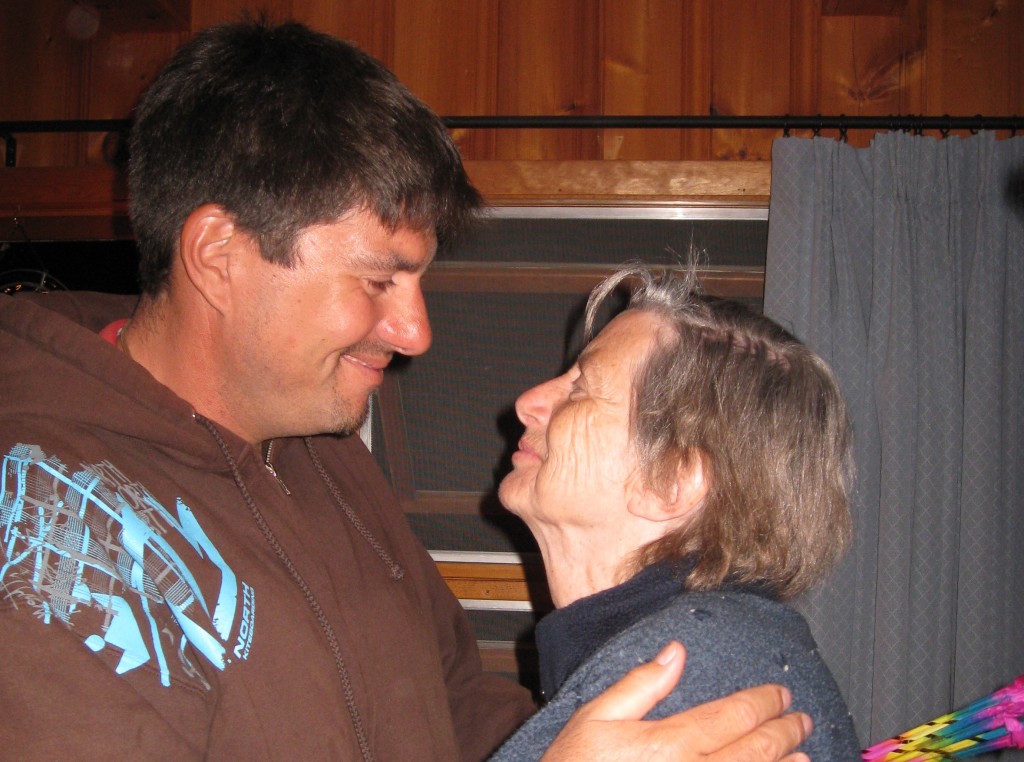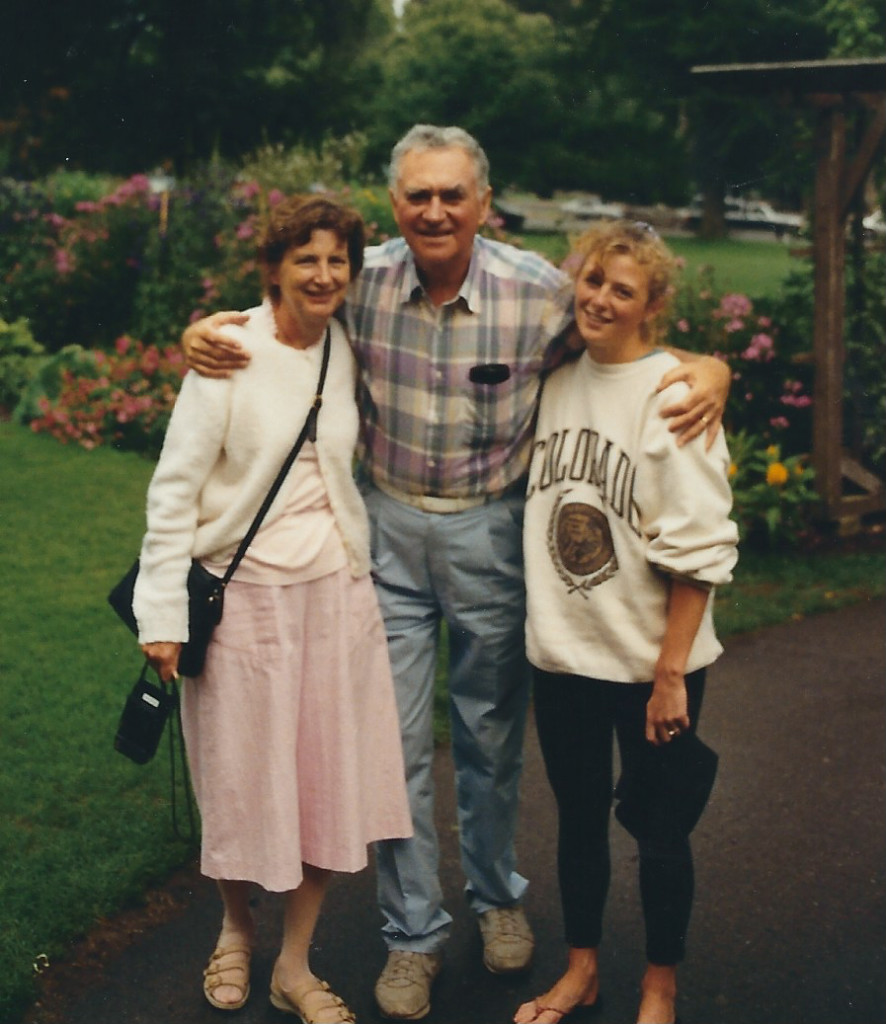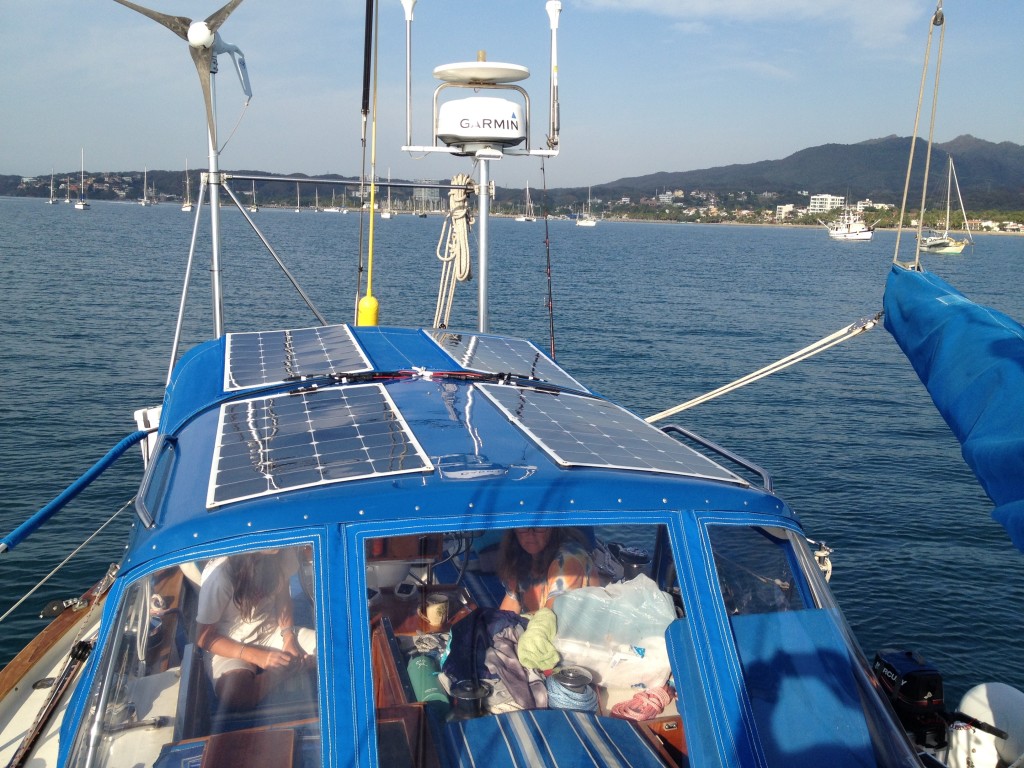
This week we added “solar charging” to the list of things that are working. This is huge. It’s so cool that sometimes it just seems like magic. Before solar we had to run the engine or the Honda generator for several hours a day. With the old refrigeration system, it was simply necessary. But once we replaced the refrigeration with a small Technautics 12v system, running the engine to keep the batteries topped up became a major chore. On a typical day we’d wake up, get coffee going and listen to the morning VHF radio net. After that I’d head up on deck to fill the Honda generator with about a gallon of gas. Given the rolling, pitching nature of a boat at anchor, this would typically result in at least some spillage and the subsequent string of expletives. Once finished with this messy task, I’d fire up the generator and head below to try washing off the smell of gas. Karen & the kids would head to shore or do whatever was on the agenda for the day, but someone – usually me – would have to stay aboard during charging. While the little Honda is pretty quiet, after many hours and days of charging, the smell of exhaust and the sound of that “quiet” motor was enough to keep me very on edge. Some days it was all I could do to keep myself from hucking that thing off the deck for one damned moment of silence! To keep the batteries at an acceptable level the Honda would run for 4-6 hours a day, typically running out of gas to indicate we were finished, for now. Even with that we were barely hanging on, with voltages ending at 12.6 or 12.7, mostly charged.
In contrast, our days with solar power are quiet and effortless. On a typical day we wake up, get the coffee going and clean off the solar panels while waiting for the morning radio net. Even loaded with dew, the panels are already pulling in between 4 – 6 amps before I clean them. We listen to the morning net and eat breakfast in the cockpit, watching bait fish churn next to the boat pursued by the occasional dorado (mahi mahi), pelican, or booby. After breakfast we go about our day. I usually check the solar input a few times a day as it ramps from 3-4 amps in the early morning to about 20 – 22 amps by midday. We run the inverter (converts 12v to 120v power) for several hours to power sewing machines, charge computers, etc, but most importantly we are free to leave the boat unattended, all day if necessary. She takes care of herself now. By evening we gather back aboard to make dinner and check the battery voltage. Most days, we’re pulling in between 90 – 130 amp hours, enough to leave our 540 amp hour house bank and emergency start batteries topped up to 12.8v, which means they are very, very happy. No more stink, no more noise and no more ties binding us to an engine running fossil fuel! It’s hard to express how amazing this is; all of this power comes from the sun, and it’s free. I want to put solar panels on everything!
We have many boat friends who are curious about the technical details of our installation, so I’ll share them here. We started by considering where on the boat we could mount panels and how we might do it. Batu has a long boom with maybe 6″ of clearance between the back of the boom and the backstay. Without a large metal arch behind that location, our options were limited to the stern quarter side panels or the dodger & Bimini tops. We considered stern side panels, but to properly mount in this location would require some metal work. We would need to replace the lifelines with stainless tubes welded in place. We spoke with several cruisers with panels mounted in this location. Most said it was OK, but they worried about damage from wave strikes and other boats. One set of friends lost a panel and sustained damage to their stainless infrastructure from another boat docking carelessly. In the end, we decided mounting panels on top of the dodger and Bimini was our best option for inexpensive mounting and hassle-free operation. It was a difficult decision because it required a complete re-working our sun awning which keeps us cool & breezy when not underway. Our boom leaves very little clearance in this area, so we decided to look at flexible panels which are less than 1/4″ [5mm] thick. Several friends suggested flexible panels from Renogy, but these are not currently available. We ultimately purchased four 100w flexible mono-crystalline panels made by HQST, virtually the same panel as the Renogy. Since most solar panels output higher voltage than batteries require for charging, we bought a Blue Sky 3000i MPPT-type charge controller. MPPT controllers cost a bit more, but can increase the charging output by 20 – 30% by converting the extra voltage from solar panels into additional charging current. For maximum efficiency, we calculated wire sizes based on the length of runs for a maximum voltage drop of less than 3%. By careful estimation of our power usage we calculated that we needed to replace 75 – 100 amp hours per day. Our hope was that the solar installation would produce slightly more; maybe 100 – 120 amp hours per day. In practice, we’re doing just a bit better than we’d hoped. The extra capacity will help us stay charged on cloudy days or when sails shade the panels while underway. At this point we couldn’t be more thrilled about the conversion to solar; it is the boost we need to feel energy-independent while heading to the South Pacific and beyond. Heading south and west, we will not be able to plug into shore power for at least a year or more.
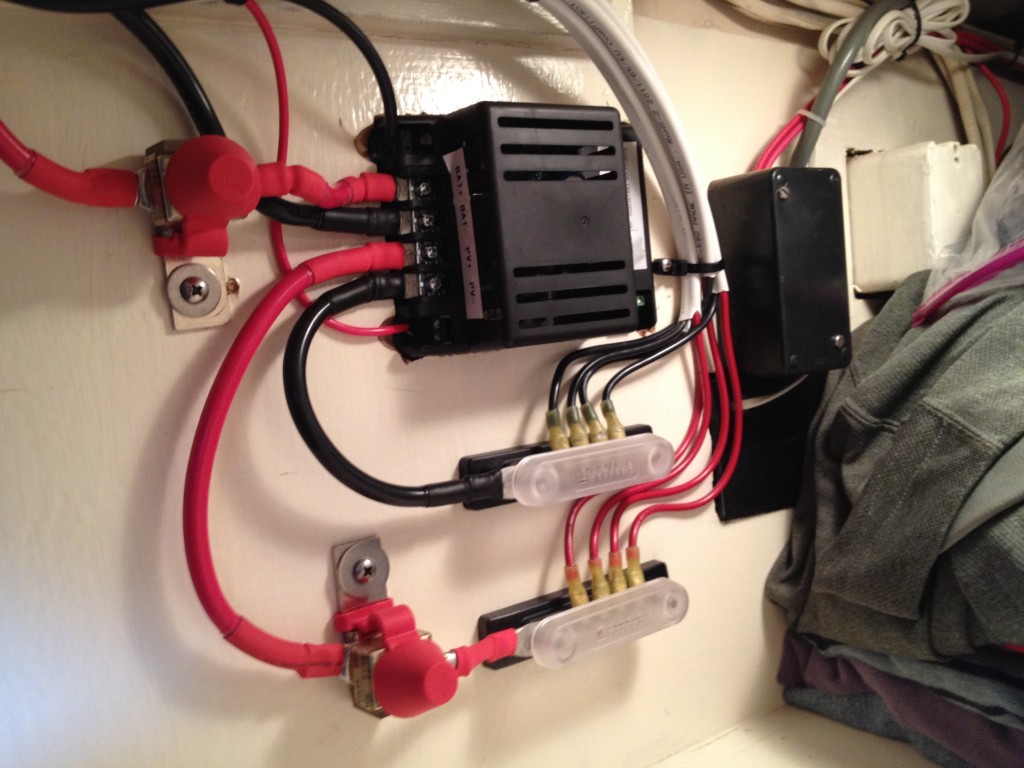
This entire process leads me to think about what’s going on with energy conservation and use of renewable resources on land. With due respect to all parties left and right, I have no political agenda other than finding a better understanding of the world. One of the reasons we pursued the voyaging life was to truly understand what it means to have full accountability for our energy usage. The best way to describe my previous, suburban attitude about energy use would be so say I was “disengaged.” Knowing we might save $50 a month by changing our home’s halogen lamps with energy efficient CF or LED replacements didn’t really affect me. I like the light from halogens, and damn it, I work hard; there are already plenty of things on my “to do” list! It is difficult to be engaged when the system itself (i.e. the cost of electricity) underestimates the real cost of energy. The vast majority of power in the U.S. is generated using coal, natural gas, nuclear and oil resources. None of these power sources are sustainable and each has significant environmental impacts which are not accounted for in the cost of electricity. What if even a small percentage of homeowners were to make a push for solar? What if 10% of suburban homes were to streamline their power usage, install LED bulbs and put 2000w of solar panels on the roof? What if all new home construction included a basic solar package? The ramifications are huge. When we return to our home in Oregon we will certainly discuss it. The value of energy finally means something to me, and all things considered, the cleanliness and simplicity of solar power has me fired up.
